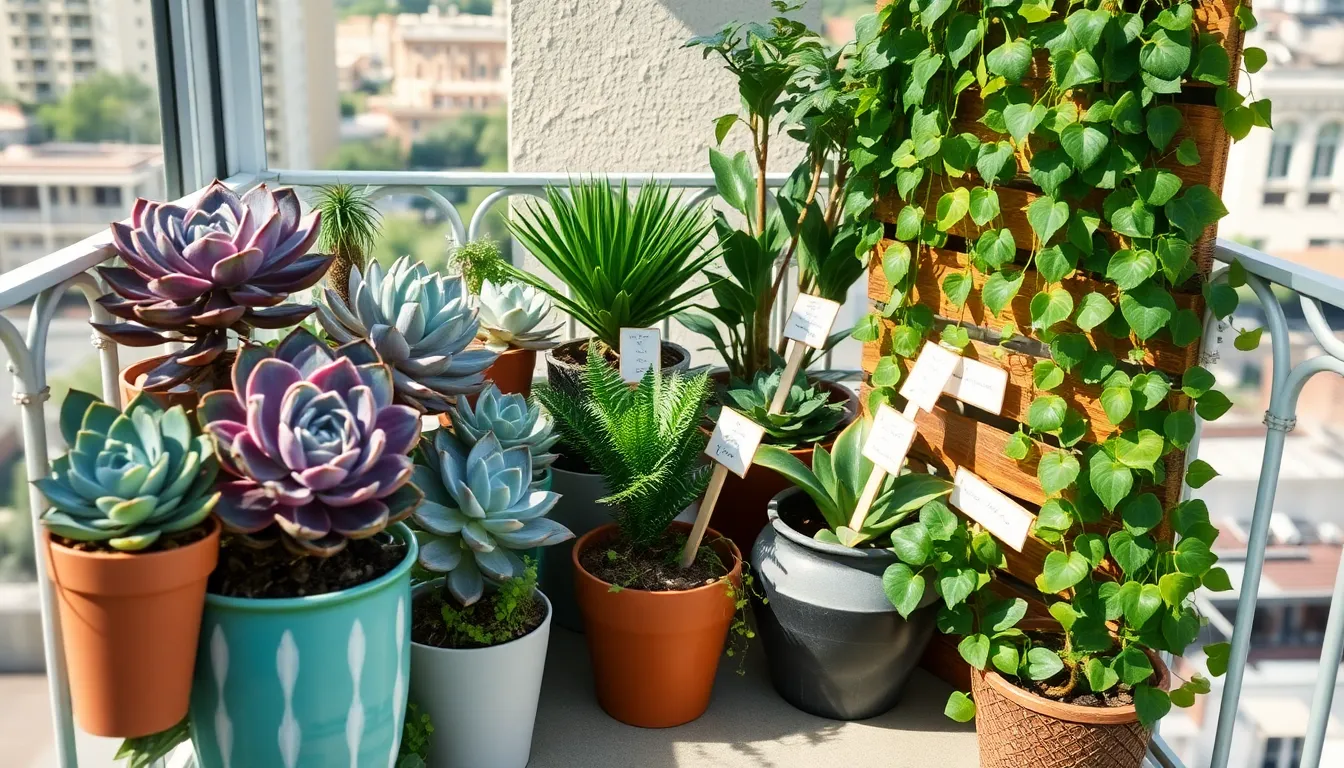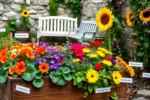Welcome to the delightful world of balcony gardening, where your small outdoor space can transform into a lush, inviting haven. Whether you’re a seasoned green thumb or just beginning your gardening journey, creating a cozy balcony garden is an enriching endeavor that promises to bring joy and tranquility right to your doorstep. In an urban landscape, where space is often at a premium, a well-crafted balcony garden not only enhances the aesthetic value of your living area but also provides a personal sanctuary filled with nature’s calming presence.
Crafting a cozy balcony garden is more than just a hobby; it’s an opportunity to cultivate a space that reflects your personality and nurtures your well-being. With the right guidance, you can learn how to select suitable plants, arrange them creatively, and maintain a thriving mini ecosystem that suits your lifestyle and environment. This article will walk you through practical steps and innovative ideas to make the most of your balcony, offering tips on choosing the right containers, working with limited space, and creating a harmonious balance of beauty and function.
By the end of your read, you’ll be equipped with the knowledge and confidence to design a balcony garden that not only fits your space but also your gardening aspirations. Prepare to delve into a world where your creativity can flourish alongside your plants, and watch as your balcony transforms into a cozy retreat that you will love to nurture and enjoy. Embrace the journey, and let’s get started on creating your own green oasis in the sky.
Assess Available Space Dimensions
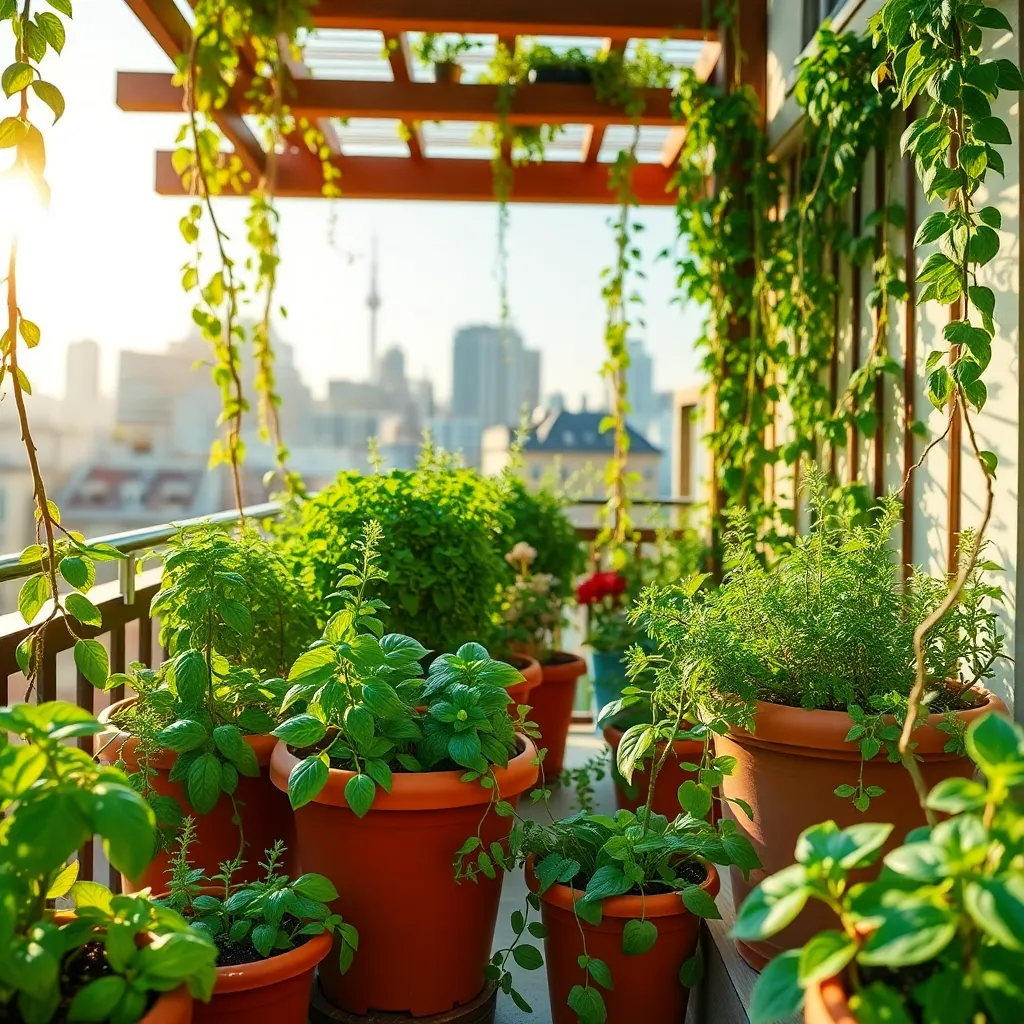
Before diving into planting, it’s essential to take precise measurements of your balcony space. Understanding the dimensions of your area helps in planning the layout and selecting the right plant containers.
Consider the amount of sunlight your balcony receives throughout the day. This information will guide you in choosing plants that thrive in your specific light conditions, such as sun-loving succulents or shade-tolerant ferns.
Vertical space is equally important and can be maximized for a lush, cozy garden feel. Install hanging planters or wall-mounted shelves to utilize every inch, allowing you to grow more without sacrificing floor space.
Measure the height of any railings or barriers as they can influence wind exposure. This detail helps in deciding whether to install windbreaks or choose sturdier plants that can withstand breezy conditions.
Select Suitable Container Plants

When selecting container plants for your balcony, consider the amount of sunlight the space receives daily. Choose plants that thrive in your specific light conditions, such as shade-loving ferns for low-light areas or sun-loving herbs like basil for bright spots.
The size of your containers should match the growth habits of your chosen plants. For example, small herbs like thyme or chives can thrive in smaller pots, while larger plants like tomatoes or dwarf citrus trees require more substantial containers to accommodate their root systems.
Using the right soil mix is crucial for container gardening success. Opt for a high-quality potting mix that provides good drainage and nutrients, as garden soil can be too dense and may lead to poor drainage and root rot.
Regular watering is essential, but be mindful of not overwatering, which is a common mistake. Most container plants need watering when the top inch of soil feels dry to the touch; however, this can vary based on the weather and plant type.
Arrange Plants for Maximum Sun

Arranging plants for maximum sun exposure is crucial for a thriving balcony garden. Begin by observing how sunlight moves across your balcony throughout the day, noting areas that receive direct sunlight for at least six hours.
Consider the sunlight needs of each plant, as some thrive in full sun while others prefer partial shade. For sun-loving plants like tomatoes or basil, place them in the sunniest spots, ideally facing south or west.
In contrast, shade-tolerant plants like ferns or hostas should be placed where they get less intense sunlight, such as near walls or railings. This strategic placement not only ensures healthy growth but also prevents sunburn on delicate leaves.
For advanced gardeners, consider using reflective surfaces, such as light-colored walls or mirrors, to increase light exposure on your balcony. Additionally, rotating plants weekly can help them grow evenly and prevent them from leaning towards the light source.
Incorporate Comfy Seating Options
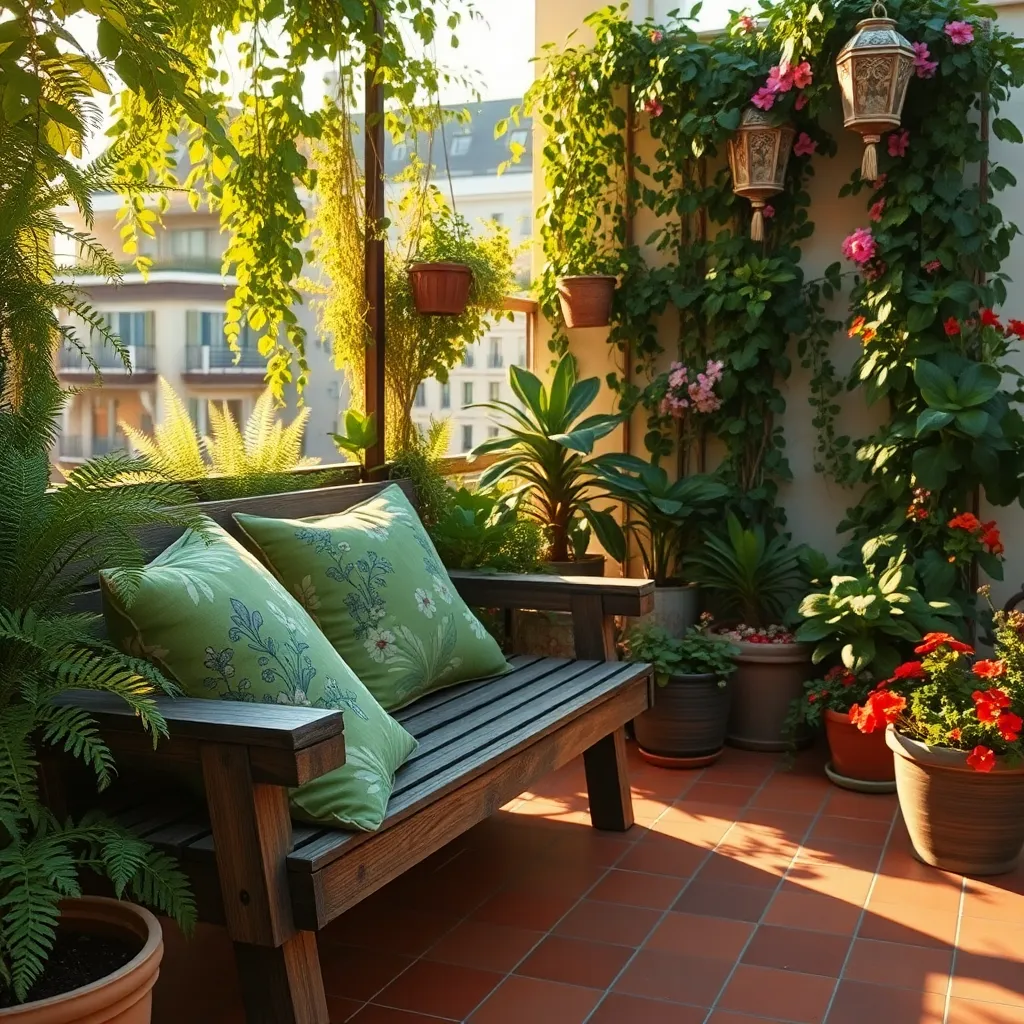
Creating a cozy balcony garden involves more than just plant placement; it’s also about crafting a welcoming space. Incorporating comfy seating options can transform your balcony into a personal oasis where you can unwind amidst nature.
Begin by selecting weather-resistant furniture that suits the size of your balcony. Options such as folding chairs or compact bistro sets made from materials like teak, metal, or rattan are perfect for outdoor use, ensuring both durability and style.
To enhance comfort, add cushions with outdoor-friendly fabric that can withstand sun exposure and occasional rain. Look for cushions made from materials like polyester or acrylic, which are both water-resistant and fade-resistant, ensuring they stay vibrant and comfortable for longer periods.
Strategically place your seating among your plants to create a natural and immersive environment. Consider positioning your chairs or benches to catch the morning sun or enjoy the afternoon shade, depending on your personal preference and climate conditions.
Advanced gardeners might consider integrating seating options that double as plant stands or storage solutions. Benches with built-in planter boxes or under-seat storage can maximize space and functionality, making even the smallest balconies feel expansive and organized.
Add Decorative Lighting Elements
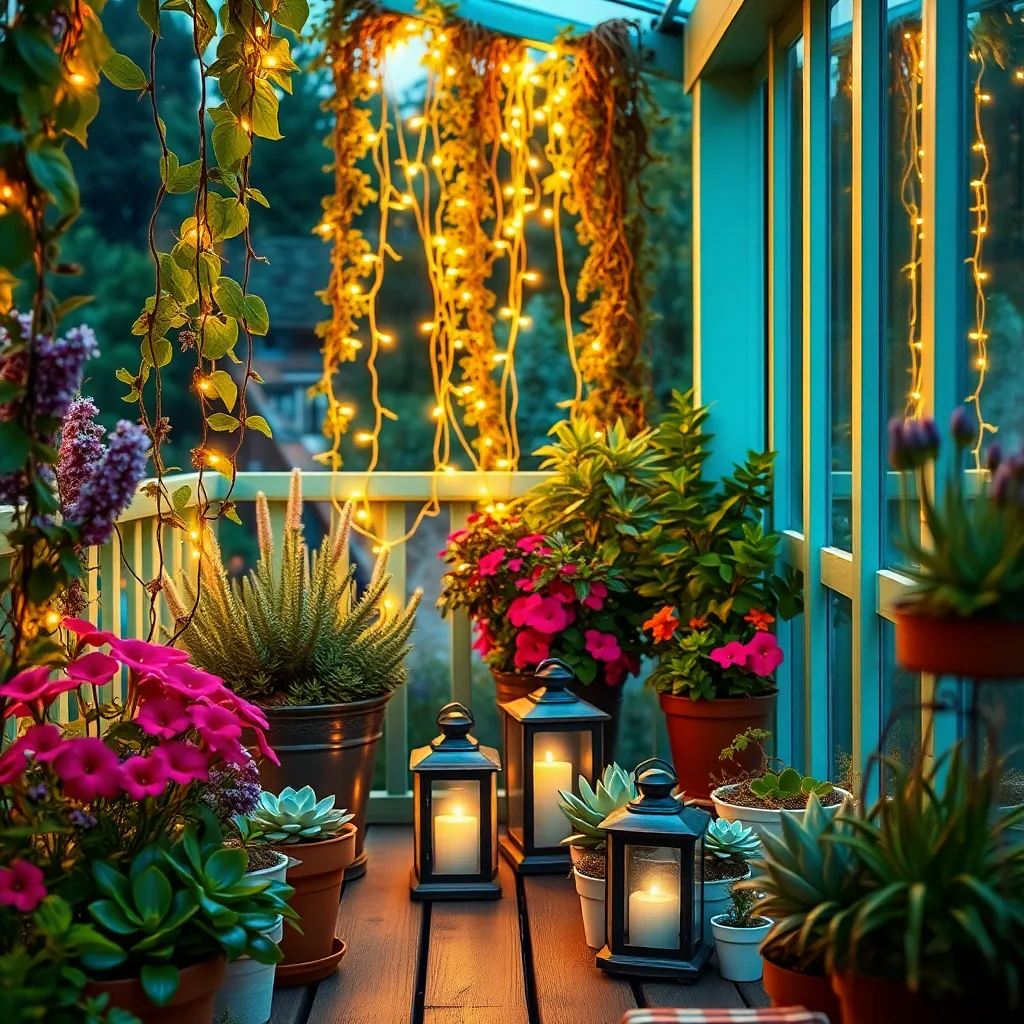
Enhancing your balcony garden with decorative lighting can transform it into a cozy retreat. String lights are an excellent choice, offering a warm ambiance that highlights your plants and seating area beautifully.
Consider solar-powered lights to minimize electricity usage and ensure easy installation. These lights charge during the day and illuminate your garden at night, making them both eco-friendly and convenient.
For a more whimsical touch, hang fairy lights or lanterns among your plants. This not only adds charm but also creates a magical glow that accentuates your garden’s natural beauty.
Advanced gardeners might enjoy experimenting with LED spotlights to highlight specific plants or features. These lights can be strategically placed to emphasize the texture and color of your favorite foliage.
Conclusion: Growing Success with These Plants
Creating a cozy balcony garden can be a delightful venture that strengthens the roots of your relationship. Throughout this article, we’ve explored five key concepts to nurture both your garden and your bond: choosing plants that symbolize growth and harmony, designing a space that encourages togetherness, incorporating elements that stimulate the senses, establishing a shared routine for maintenance, and using this sanctuary as a backdrop for meaningful conversations.
Now, let’s turn inspiration into action. This weekend, take a trip to your local nursery together and select a few plants that resonate with both of you. Begin with herbs or flowers that reflect your relationship goals, and watch them flourish alongside your connection.
Remember, every relationship thrives with continuous care and attention. Bookmark this article to revisit these ideas and track your progress. Let it serve as a reminder of the cozy haven you’re building together—a symbol of your shared journey.
As you cultivate this balcony garden, envision the deepened connection and joy it can bring. With each new leaf and bloom, may your relationship grow stronger and more resilient, paving the way for a future filled with love and companionship. Save this article now and embark on a journey of growth and togetherness.

